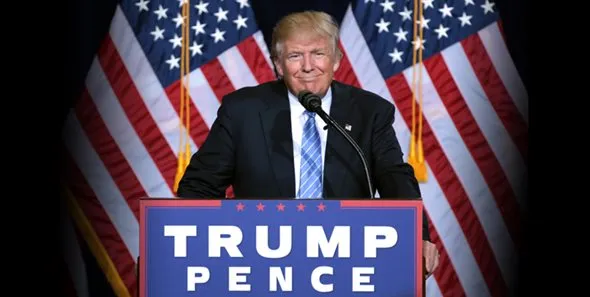


How Donald Trumped with Digital Marketing
Despite the predictions of polls, of mainstream media, of common sense: Trump beat Hillary. And he did it on half the budget. How did social media play a part in this election? And was it why he won?

Despite the predictions of polls, of mainstream media, of common sense: Trump beat Hillary. And he did it on half the budget. Not since Carter defeated Ford in 1976 has the presidency gone to the candidate who spent less; but then again, never before have social media and digital marketing played such a central role in a presidential race. In what’s being called the first social media election, Trump’s unconventional campaign was as disruptive as the man himself, and ultimately won the day over Hillary’s more traditional tactics. What did his campaign do right?
Harnessing the power of real-time communication to monopolise attention
Trump and his team are champions of Twitter. By election day, @realDonaldTrump had over 14 million followers to Hillary’s 11 million – now at 15.3 and counting. Trump gained an edge by using social media to keep the conversation all about him at all times. During his campaign, he tweeted with incessant frequency, syncing tweets with rallies and events so that his Twitter acted as a constant live-feed of his sayings and doings. Hillary’s Twitter game suffered from being neither as aggressive, nor as integrated with real-life events, and from lacking a distinctive voice.
Free media works better than paid advertising
This has long been evident, but Trump’s victory is the single most astonishing demonstration of the power of this truism. Hillary’s campaign represents the utmost efforts of traditional advertising, on which she spent $141.7 million. She enlisted A-list royalty such as Beyoncé to evangelise her message; one video, directed by Joss Whedon, literally featured dozens of celebrities lampshading their own celebrity status. It’s Big Advertising in a nutshell.
In contrast, Trump spent a mere $58.8 million on traditional advertising – and didn’t do any at all until August. He didn’t need to: he’s a content-generating machine, a walking, talking, viral meme. In the form of controversial sound bytes, he relentlessly bombarded the world with content so shareable it earned him $5 billion in free coverage. As he himself remarked in an interview with CNS last week:
“The fact that I have such power in terms of numbers with Facebook, Twitter, Instagram, etc., I think it helped me win all of these races where they’re spending more money than I spent. And I won. I think social media has more power than the money they spent, and I think maybe to a certain extent, I proved that.”
You can take issue with almost everything the man says, but this, at least, doesn’t brook much argument.

Being smart with Facebook
Facebook’s influence on this election cannot be underestimated. It played a central role in the strategy of Brad Parscale, the mastermind behind Trump’s digital operation, and was particularly critical in expanding Trump’s outreach at the start of his campaign. Parscale was initially given a small budget to achieve this and spent it all on Facebook, buying $2 million in ads which he optimised using the network’s marketing tools: notably, the “Lookalike Audiences” feature to identify new target pools, and the “brand-lift” survey tool to assess the effectiveness of ads.
Many supporters on Facebook were reached through “dark” posts, which are non-public and specifically targeted. Not only do these give advertisers direct control over who sees the ad, they’re also great for A/B testing. Parscale made the most of this by pitting design shops against one another in Apprentice-style rounds, eliminating designers whose ads tested poorly. The process of targeting, testing, and mobilising market competition among designers allowed Parscale’s team to continually hone their content so that as they ramped up their spending to $70 million a month, they could be sure they’d got the formula right.
Dark posts were also a key channel for a suppression operation that aimed to discourage likely Hillary supporters from voting. This targeted three main demographics: idealistic white liberals, young women, and African Americans. The extent to which this impacted votes remains to be seen; but focusing efforts not only on their own target audience but also that of their opponent represents another break from traditional campaigning.
Owning Data
Both figuratively and literally.
Trump’s campaign strategy was underpinned by the development of a database called Project Alamo. Early on, Parscale found that they were mostly preaching to the converted – those who already supported Trump – and he sought ways to locate and sway undecided voters.
Most of what they knew about Trump’s supporters came from requests for tickets to rallies. EventBrite, the ticketing system they’d been using, wasn’t giving them the information they needed and was also susceptible to protestor requests. So Parscale built his own system which collected email addresses, phone numbers, contact info and credit card numbers – as well as winnowing out false requests. Through this system, they were able to identify an untapped mine of 13.5 million undecided voters in 16 battleground states.
With this as their basis, they joined forces with Cambridge Analytica (who also worked on the Leave campaign), and used their statistical models to target likely supporters on Facebook. They also bought email-lists from Gingrich and Tea Party groups to widen their net even further.
Once Trump secured the nomination, Parscale cut a deal with the Republican National Committee, gaining access to their email-list of over 6 million supporters. But Trump came out the winner in that negotiation.
This rich pool of resources fed the data-hungry beast of Project Alamo, which at 14 million email addresses now dwarfs the RNC’s list – and because Trump was self-funded, the RNC can’t touch it. It all belongs to him.
Data not only helped Trump to win the most exalted position in the world; it’s also amassed into an extremely valuable asset in and of itself, which he can exploit as he pleases. He’s hinted he might use it to launch a Trump TV network. Let that happy image sink in.

Posted 24 November 2016